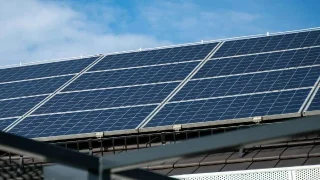
The Centre for Independent Studies (CIS) welcomes the opportunity to make a submission to the Select Committee on Energy Planning and Regulation in Australia regarding how the Integrated System Plan addresses government policies.
The CIS is a leading independent public policy think tank in Australia. It has been a strong advocate for free markets and limited government for more than 40 years. The CIS is independent and non-partisan in both its funding and research, does no commissioned research nor takes any government money to support its public policy work.
This submission has been prepared by the CIS Energy Team, with input from myself, Zoe Hilton, Alex Bainton and Michael Wu.
CIS submits that AEMO has misinterpreted the National Electricity Rules (NER) requirement to ‘consider’ — that is, thoughtfully evaluate — government policy, and has instead made all official government policies a binding constraint on every scenario in the Integrated System Plan (ISP) model, regardless of the likelihood of each target being achieved. The uncritical acceptance of policies as being both irrevocably made and inevitably successful is entirely contradictory to the meaning of ‘consider’. AEMO’s actions would be defensible only if they were required by the rules to ‘promulgate’ government policies, where the process of consideration is assumed to be concluded.
By neglecting to ‘consider’ policies in the usual and proper sense, and simply implementing them as binding constraints in their models, AEMO has failed to ensure the scenario collection meets the stated criteria of being plausible, distinctive, broad and useful. AEMO has also failed to balance the price and emissions reduction components of the National Electricity Objective.
The result is that consumers have not been adequately protected from premature and over-investment in transmission, and the ISP’s ‘optimal development path’ is not in fact an optimal path for consumers.
Furthermore, AEMO’s current practice brings the interests of states into direct conflict, as one state’s policy (e.g., offshore wind in Victoria) being placed as a constraint on the model can undermine the competitiveness of more economical investments in other states (e.g., onshore wind in South Australia). The lack of transparency around costs and interactions between policies means policymakers are left in the dark on the relative costs and benefits of different policy options, which ends up driving up costs for consumers when suboptimal investments are made.
The NER do not require every scenario to reach government targets
AEMO’s method of scenario design fails to protect consumers from premature and over-investment in transmission projects. This is because all the 2024 ISP scenarios, and those proposed for the 2026 ISP, are bound by the assumption that all government policies and targets will be fully achieved, without considering the possibility of delays, modifications, or removal of such policies and targets. As a result, the economic benefits of supporting renewables infrastructure, most notably transmission lines, as measured by the ISP, are unduly inflated. This is because the targets are “ambitious” by the government’s own admission, and more likely eventualities include far less renewable generation being available to utilise the transmission capacity, as well as more thermal generation being retained which does not require the additional transmission.
Government policies can be expected to impact which outcomes are most likely. For instance, the introduction of subsides such as the Capacity Investment Scheme could be expected to increase the volume of renewable generation that is built. When constructing scenarios of plausible futures, this positive effect of policies on the likelihood of outcomes must be considered. However, government policies are not the sole determinant of plausibility. Other factors constraining the construction of new renewable energy projects — such as workforce constraints, social license and grid connections — must also be considered alongside government targets when forming plausible scenarios. The assumption that all government policy will inevitably be successful effectively negates the usefulness of constructing scenarios to span the likely outcomes of an uncertain future.
In the 2024 ISP, AEMO has justified elevating government policy above all other factors in their scenario design by misinterpreting the National Electricity Rules (NER).
On page 4 of the 2025 IASR Scenarios Consultation Paper, AEMO cites the NER as the reason it applies all government policies to all scenarios:
As required under the National Electricity Rules (NER), for the ISP’s purposes, all scenarios in the scenario collection apply relevant policies that meet public policy criteria, including international commitments (such as to the Paris Agreement) and legislated policies that are quantifiable within AEMO’s modelling scopes…
Again, on page 13, AEMO states:
AEMO is bound by the NER to consider policies that meet the relevant public policy criteria, and considers that identifying the necessary investments to achieve these policies is an appropriate and important insight from the scenario planning process. Applying the scenarios to identify investments or actions that are optimal in the event of policy failure, or project execution delay, are not appropriate for AEMO’s planning functions, under the Rules and Guidelines that AEMO is required to meet.
On 31 July 2024, in the Forecasting Reference Group meeting regarding the 2025 IASR, AEMO again defended its approach by citing NER 5.22.3.
However, the NER does not require AEMO to apply all policies to all scenarios. In clause 5.22.3, the NER states:
b) In determining power system needs and in determining how the Integrated System Plan would contribute to achieving the national electricity objective, in relation to participating jurisdictions, AEMO:
(1) must consider the emissions reduction targets stated in the targets statement; and
(2) may consider a current environmental or energy policy of a participating jurisdiction, including an emissions reduction target which is not set out in the targets statement, where that policy has been sufficiently developed to enable AEMO to identify the impacts of it on the power system and at least one of the following is satisfied:
(i) a commitment has been made in an international agreement to implement that policy;
(ii) that policy has been enacted in legislation;
(iii) there is a regulatory obligation in relation to that policy;
(iv) there is material funding allocated to that policy in a budget of the relevant participating jurisdiction; or
(v) the MCE has advised AEMO to incorporate the policy.
The requirement placed on AEMO regarding government policies is that it “must consider” emissions reduction targets in the targets statement and “may consider” other government policies. AEMO has misinterpreted the meaning and intention of the word ‘consider’ in this clause. In the final determination for the Harmonising the national energy rules with the updated national energy objectives (electricity) rule change, the AEMC did not direct AEMO to bind all scenarios to all targets, but merely to “have regard to all relevant targets on the targets statement when preparing ISP scenarios”, further clarifying that “in making determinations for the ISP, AEMO must, at a minimum, consider the greenhouse gas emissions reduction targets included in the targets statement”. This requirement can be fulfilled by ensuring all targets on the targets statement are included in at least one scenario.
Given ‘consider’ is not defined in the NER, federal case law can inform what constitutes consideration. In Rasheem & Rasheem [2024] FedCFamC1F 595 concerning the Family Law Act 1975 (Cth), which also does not include a definition of ‘consider’, a dictionary definition is used:
The Full Court, referring to a definition in the Oxford English Dictionary (2nd edition) determined that consideration requires a trial judge to “contemplate mentally, fix the mind upon; to think over, meditate or reflect on, bestow attentive thought upon, give heed to, take note of”…
Similarly in administrative case law, the relevant legal principles contained in Bat Advocacy NSW Inc v Minister for Environment Protection, Heritage and the Arts [2011] FCAFC 59 define mandatory consideration as an active intellectual process:
The obligation of a decision-maker to consider mandatory relevant matters requires a decision-maker to engage in an active intellectual process, in which each relevant matter receives his or her genuine consideration.
Rather than engaging in an active intellectual process and bestowing attentive thought to how government policies should be included in the scenario collection, AEMO has done the opposite and adopted an approach that assumes all government targets will be met in every scenario. Treating the application of government policy as paramount is an erroneous interpretation of ‘consideration’, as Smithers J. confirmed in Drake v Minister for Immigration and Ethnic Affairs (1979) 24 ALR 577:
…the factor which may be said to constitute error in the present case is not that the Tribunal applied considerations in accordance with the Minister’s policy, with the expression of which, as a guide in relation to the subject matter, no substantial fault can be found, but that the Tribunal treated the application by the Minister of his policy as paramount.
In binding every scenario to all official government policies, AEMO has made the application of government policy paramount at the expense of the protection of consumer interests.
Conversely, there is a requirement under NER 5.22.10 that AEMO consider the risks to consumers arising from uncertainty:
(a) In preparing an Integrated System Plan, AEMO must…
(5) consider the following matters…
(ii) the risks to consumers arising from uncertainty, including over investment, under-investment, premature or overdue investment …
AEMO has failed in its duty to properly consider how government policies are incorporated into scenarios through an active intellectual process. In doing so, AEMO has also failed in its duty to consider the risks to consumers of premature and over-investment arising from policy uncertainty. AEMO’s approach to government policy induces premature and over-investment, driving up total system costs at the expense of consumer interests. Until AEMO alters its approach to scenario design to consider a broader range of possibilities, including targets being missed, moderated or removed, consumers will continue to bear the cost of premature and over-investments.
Treatment of government policies in previous ISPs
In February 2024, the NER was amended to include clause 5.22.3 (b)(1) containing the “must consider” requirement as part of the Harmonising the national energy rules with the updated national energy objectives (electricity) rule change, with the AEMC publishing the targets statement listing relevant policies. Prior to this, the 2020 and 2022 ISPs did not bind every scenario to meet every target. Instead, the competing requirements to consider both government policy and the risk to consumers arising from uncertainty were harmonised by ensuring that some scenarios included policy targets, and others did not.
For example, both the 2020 and 2022 ISPs included the Slow Change scenario in which the National Electricity Market (NEM) failed to reach the 43% emissions reduction target, alongside scenarios in which the target was met.
The AEMC rule change combined with AEMO’s misinterpretation of what ‘consideration’ entails has had a damaging effect on the breadth of realistic future scenarios considered in the 2024 ISP compared to previous ISPs.
The 82% renewables by 2030 target is unrealistic
The list of government policies included in all scenarios of the ISP has greatly expanded. However, the federal government’s 82% renewables by 2030 target appears to be the most constraining policy of all.
The 82% target by 2030 was neither required nor expected to be met in any previous ISP, and results in significant undershooting of the ISP’s emissions budget for the NEM. In the 2024 ISP, cumulative emissions for the FY2025-30 period are projected to be 443 Mt for the Step Change scenario and 476 Mt for Progressive Change (Figure 1). Both are well below the carbon budget of 630 Mt placed on the ISP model, which aligns with Australia’s 2030 Paris emissions target of a 43% reduction from 2005 levels. The scenarios also undershoot the 2050 ISP carbon budget. The Progressive Change scenario, which “meets Australia’s current Paris Agreement commitment”, has a cumulative budget of 1,203 Mt but only projects emissions of 916 Mt out to 2050. This indicates the federal government’s 82% renewable target for 2030 is the chief policy constraint driving outcomes in the ISP, not the Paris emissions requirements. None of the states are aiming as high, e.g. Queensland targets 50%, and Victoria 65%.
Figure 1. Planned emissions in the 2024 ISP scenarios significantly undershoot the carbon budget.
The aggressive 82% renewables target has a significant effect on planning outcomes and has already led to premature investment in the case of HumeLink’s approval (see CIS submission to the Committee regarding HumeLink). Indeed, AEMO stated on page 61 of Appendix 6 of the 2024 ISP that the 82% target, along with the carbon budget restraints placed on the ISP model, is the biggest driver for the need to deliver HumeLink.
This target being a binding constraint on every scenario in the ISP means the model is forced to rapidly build massive amounts of new renewable generation in the next several years. The marginal benefits of transmission interconnection are improved with this extremely rapid build-out of generation. Network investments are then recommended and approved based on this assumed future in which renewables reach 82% penetration by 2030. But if the target is missed, many of the approved transmission projects will represent either premature or over-investment, driving up energy bills for consumers without providing corresponding benefits.
It has become increasingly clear that the target of 82% renewable energy by 2030 is unlikely to be achieved. This has been confirmed by the Grattan Institute, Energetics, and Nexa Advisory. One of the key reasons renewables penetration will likely fall short of this target is workforce constraints. A UTS report commissioned by AEMO found that the demand for electrical engineers would triple by 2029 to implement the 2024 ISP’s Optimal Development Path before dropping below current levels in the late 2030s. The overall electricity workforce needed to deliver the energy transition is much larger, with the report warning of a dearth of information on the scale required “with estimates for 2030 varying from 200,000 to 400,000”. The report points out the problems this creates for the deliverability of the ISP, outlining that the high risk of skills shortages “could impact on the achievement of the ISP’s optimal development path” and create “risks of delays, increased project costs and increased cost of capital to reflect increased risk.”
There has also been a slump in renewable investments in recent years, with new large-scale renewable projects becoming operational at an average rate of only 2.5 GW per year (Figure 2). Despite this slowdown, the ISP models between 5 and 15 GW being added annually from 2024-25 to 2029-30 across its three scenarios to meet the 82% renewables target by 2030. Consequently, the uncritical and universal acceptance of government policies as modelling constraints has allowed the ISP to produce projections about a future which is increasingly divergent from what recent experiences indicates is most likely.
Figure 2. Historical annual new capacity of large-scale renewables is much lower than projected annual new capacity in ISP scenarios.
There is also the possibility of a shift in policy following a change in government, which could result in the removal of interim targets and incentives for renewables and the commencement of the process of building nuclear power plants. The likelihood of the 82% target being missed, moderated or removed and AEMO’s refusal to consider any such future scenarios has guaranteed premature and over-investment in transmission.
On page 6 of the 2025 IASR Scenarios Consultation Paper, AEMO asserts that “scenarios need not be normative, that is, describing visions of preferred futures”. However, AEMO’s decision to bind all scenarios to meet all relevant targets functionally means the scenarios have been used to describe visions of the preferred futures of governments at the expense of consumers.
This is evident in how Energy Minister Chris Bowen has used the ISP as justification for government policy choices, particularly the 82% target:
AEMO’s roadmap shows the Albanese Government’s ambitious but achievable targets to deliver 82 per cent renewables into the grid by 2030 and hit net zero by 2050, are achievable and will deliver $22 billion in benefits that would not materialise if a different mix of renewables and transmission was adopted.
Contrary to Mr Bowen’s claim, the ISP does not show these targets are achievable. Instead, the ISP assumes government policy targets are achieved, and does nothing to test alternatives, or assesses their plausibility. The benefits in the optimal development path cannot be attributed to government policies because no alternative is considered.
Scenarios do not satisfy key principles of scenario design
AEMO adopts the following principles when developing scenario collections, as outlined on page 7 and 8 of the 2025 IASR Scenarios Consultation Paper:
• Internally consistent – the underpinning assumptions in a scenario must form a cohesive picture in relation to each other.
• Plausible – the potential future described by a scenario narrative could come to pass. Rather than applying a minimum ‘likelihood’ threshold for each individual parameter, plausibility considers the likelihood and significance of the impact of the uncertainties on planning outcomes, and the degree of stakeholder interest.
• Distinctive – individual scenarios must be distinctive enough to provide value to AEMO and stakeholders.
• Broad – the scenarios explore a diverse range of possible futures that could be achieved over the planning horizon.
• Useful – particularly for AEMO’s ISP planning requirements, the scenarios explore the risks of over- and under-investment.
The 2024 ISP and proposed 2026 ISP scenario collections fail to meet AEMO’s key principles of scenario design.
Firstly, applying the 82% by 2030 target to every scenario significantly undermines the plausibility of the scenario collection, as explained above.
Secondly, its inclusion in all scenarios in the 2024 ISP caused the scenario collection to lack distinctiveness regarding renewables penetration over time — arguably the most important parameter for determining the optimal development path. The figure below shows how ISP scenarios have become increasingly less distinctive with each iteration due to the growing number of government policies AEMO binds them to.
Figure 3. Percentage of electricity supplied by renewables shows less variance across scenarios in successive iterations of the ISP.
Thirdly, AEMO’s strict adherence to government policies also means the scenario collection is not broad enough to explore a diverse range of futures. As the 2024 Consumer Panel cautioned on page 38 of its submission to the Draft 2023 IASR: “For the ISP to be of most value, scenarios need to reflect both the range of potential future outcomes and mix of public policy settings”. This comment demonstrates the requirement for broadness in the scenario collection should apply to the treatment of government policies just as it applies to other parameters.
Finally, all scenarios being bound to government policy greatly reduces their usefulness in exploring the risk of over-investment. The following hypothetical example illustrates the problem with AEMO’s reluctance to plan for contingencies arising from missed government targets. Suppose the Victorian and NSW governments legislate a target of 90% renewables and mandate the closure of all coal plants by 2027. These policies are included in the targets statement. AEMO, following current procedure, binds the model in every ISP scenario to meet these targets. AEMO does not consider any possibility of these targets being missed, despite them being practically impossible to meet.
As a result, the ISP recommends fast-tracking several transmission projects, which go through the approval process before 2027. As 2027 approaches and the 90% targets remain unmet, the NSW and Victorian governments amend the legislation at the last minute to prevent coal plant closures that would cause widespread electricity shortages. But, by then, it is too late to stop the billions in extra transmission costs being passed onto consumers for projects that the grid ultimately does not require. This outcome would have likely been avoided had AEMO considered the possibility of government targets being missed, moderated or removed.
Without a scenario collection that is plausible, broad, distinctive and useful, the ISP cannot adequately guard consumers against the risk of both premature and over-investment. The optimal development path is not sufficiently robust in the face of uncertainty, particularly around policy change or failure, to the detriment of consumers.
Scenarios do not balance all elements of the NEO
The National Electricity Objective (NEO), set out in section 7 of the National Electricity Law, is:
to promote efficient investment in, and efficient operation and use of, electricity services for the long-term interests of consumers of electricity with respect to:
(a) price, quality, safety, reliability and security of supply of electricity; and
(b) the reliability, safety and security of the national electricity system; and
(c) the achievement of targets set by a participating jurisdiction—
i. for reducing Australia’s greenhouse gas emissions; or
ii. that are likely to contribute to reducing Australia’s greenhouse gas emissions.
The achievement of targets “that are likely to contribute to reducing Australia’s greenhouse gas emissions” does not necessitate every jurisdictional target be included as a binding constraint on every ISP scenario. Consideration of the “price…of supply of electricity” is just as important and must be given appropriate consideration in the way scenarios are designed and chosen. This is clearly stated by Attorney-General Kyam Maher in his Second Reading speech for the Statutes Amendment (National Energy Laws) (Emissions Reduction Objectives) Act 2023:
Under this framework, decision makers under the national energy laws, will be obliged to consider the emissions reduction component alongside the other components in making their decisions. In this way, the emissions reduction component is not intended to sit above, or be prioritised over, any other component within the objectives. This will ensure that the national energy objectives continue to promote the long-term interest of consumers through efficient investment, operation, and use of energy services.
The other energy bodies have stated their intention to balance the components of the NEO. As the AEMC stated on page 4 of the draft determination for the Harmonising the rules with the updated objectives rule change:
The AEMC and AER intend to continue to balance the various components of the national energy objectives in our decision-making processes in a way that promotes the long term interests of consumers overall, as we have done previously.
However, AEMO has failed to balance the various components of the NEO in their design of ISP scenarios, and has therefore failed to plan efficient investment in energy services that promotes the long-term interest of consumers. The emissions reduction component must be balanced with the price component. The binding constraints (such as the 82% renewables by 2030 target) being placed on every scenario has subjugated all other components of the NEO to the emissions reduction component. This prevents any assessment being made about appropriate trade-offs between the NEO’s components and fails to transparently account for price impacts on consumers.
On page 7 of its submission to the Draft 2024 ISP, the Consumer Panel identifies how AEMO’s approach to government policies reduces transparency around the ISP’s fulfillment of the NEO:
We would suggest that the more governments (National and Jurisdictions) realise the difficulties of achieving their 2030 objectives, the greater the policy intervention and the less consumers are able to transparently see that the ISP is indeed an optimal development path from a consumer perspective with particular respect to the NEO.
AEMO’s approach has neglected consideration of the price component of the NEO to the point that the current transmission plan is not affordable for consumers. As the Consumer Panel goes on to state on page 9 in their submission, “Consumers will not be able to ‘afford’ to pay all of the costs associated with the ODP”.
Consumers need to know the full cost of the current plan for the energy transition to have confidence that the plan has been optimised to serve their long-term interests, not only with respect to emissions reduction but also with respect to price, reliability and all other components of the NEO.
Scenarios fail to inform governments of costs of policy choices
Given the integrated nature of the energy system, governments need to know the effects of their policies on the system, and the relative impacts on costs for consumers. By locking in government policies in every ISP scenario, AEMO has not provided state and federal governments with this vital information. Without the information held by AEMO as grid operator, governments cannot know whether their policy choices will have a detrimental effect on the whole system, resulting in increased bills for consumers compared to more optimal policy choices.
The current plan for the energy system is not affordable for consumers without taxpayer support. As confirmed by the Head of Electricity Division in the Department of Climate Change, Energy, the Environment and Water, “with the transformation of the size that we’ve got now, passing costs through to consumers isn’t always a model that is achievable politically or sustainable,” which means some of the investments need to be “socialised through the Commonwealth balance sheet”.
The lack of affordability of the current ODP for consumers means governments will increasingly need to shift costs for ISP projects onto taxpayers to maintain social licence for the transition. As outlined by the Consumer Panel on page 9 of its submission to the Draft 2024 ISP:
…given the question of ‘who pays’ is outside of AEMO’s remit, we believe the ISP cannot make any conclusion about consumer affordability… This presents AEMO with a dilemma – its remit means it cannot make any conclusion about affordability. It can only make a conclusion about highest net benefits which is not affordability. However, the need to convince consumers that the transition is ‘affordable’ is key to getting ‘consumer social licence’ to support for the ISP. This means consumer support for the ODP is dependent on the level of Government financial support to ensure consumer affordability.
With energy projects increasingly needing to be subsidised or funded by taxpayers, it is vital that governments know the relative budget impacts of different policy options. This can only be quantified by analysing the effects of policy options on the system, including the interaction between policies across different states.
The result is a state government policy arms race
AEMO’s method of binding every scenario to all official government targets not only leaves governments in the dark on costs, and the interaction between policies, but it encourages state governments to engage in a policy arms race to the detriment of consumers.
Policy expansion is likely to continue occurring in future. As the Consumer Panel stated on page 8 of its submission to the Draft 2024 ISP:
There is likely to be a continued expansion in these Commonwealth and jurisdictional polices in the future, particularly if it is getting harder to meet Government emission targets. The questions for consumers is the extent to which policies compete, the rate of change of policy settings and whether they add costs.
The question around the extent to which policies in an ever-expanding collection will compete with one another cannot be answered by the ISP with AEMO’s current approach to scenario design. This is particularly relevant for state governments, to which AEMO has effectively granted a licence to lock into the model, as a sunk cost, as much generation, storage and transmission as they like regardless of the cost impact on consumers. Under the current scenario design approach, if a state government is too slow to make policy commitments, it risks another state with more ambitious (and more costly) policies undermining the economic case of its projects despite them being more optimal for the system. The end result of this incentive structure is a state government policy arms race that steadily erodes the ISP’s claim to represent the ‘optimal’ development path for the whole system.
An excellent example of this problem is Victoria’s offshore wind policy, which is locked into the ISP model and undermines the economic case for wind farms in South Australia, despite offshore wind being around double the cost of onshore wind according to the 2023-24 GenCost report. On page 7 of its submission, the Consumer Panel stated:
We contend that offshore wind is only in the ODP because of that policy. It occurs nowhere else, despite all of the action at Federal and NSW Government levels, simply because it is too expensive – there are lower cost alternatives. But the nature of ISP modelling means that Victorian consumers will never know if it is cheaper to import solar and wind from South Australia or NSW than building offshore wind in Victoria. It is no different in other States policies which seek to maximise state benefits rather than NEM benefits.
The ISP putting South Australian wind farm projects at a disadvantage may have contributed to the South Australian government signing a Renewable Energy Transformation Agreement with the federal government in July, which includes a state equivalent of the ISP. The agreement means “South Australia will establish its own specific grid reliability mechanism and benchmark to be used in place of the national framework, and to be responsible for identifying and delivering new projects and technologies that will maintain reliability to that standard”. This announcement raises the question of the sustainability of using the ISP in its current form for approving projects.
If the status quo remains in other states, the ISP-induced policy arms race which encourages governments to maximise state benefits rather than NEM benefits will result in suboptimal projects being approved and massive costs passed onto consumers (or taxpayers) without corresponding benefits. The truly optimal path for the energy system will be increasingly obscured in a jungle of policy constraints, putting at risk the energy transition as a whole.
Recommendations
Our core contention in this submission is not that the law or frameworks have been badly formed, but rather that the actors and institutions have failed to act in accordance with them.
We recommend this committee investigate and publish findings on:
• Why AEMO has chosen to interpret the NER’s instruction to ‘consider’ policy the way they have, despite receiving submissions from stakeholders highlighting the consequence of their approach.
• Why the AER has failed to recognise or investigate this as a potential breach of the NER, and bring the ISP back into compliance.
• Why the AEMC determined to change the NER (Bringing early works forward to improve transmission planning rule change) in favour of submissions by AEMO and the AER (against those submitted by consumer advocates) to defer the mandated review of the ISP by two years, which might have highlighted the consequences of this treatment of government policy in the ISP.
• What role (if any) AEMO has played in informing the government to adopt the 82% renewable energy target for 2030, (as opposed to it remaining an expected consequence of policy) with a particular view to establishing whether AEMO was aware of the likely impact this would have on major transmission projects, such as HumeLink.









